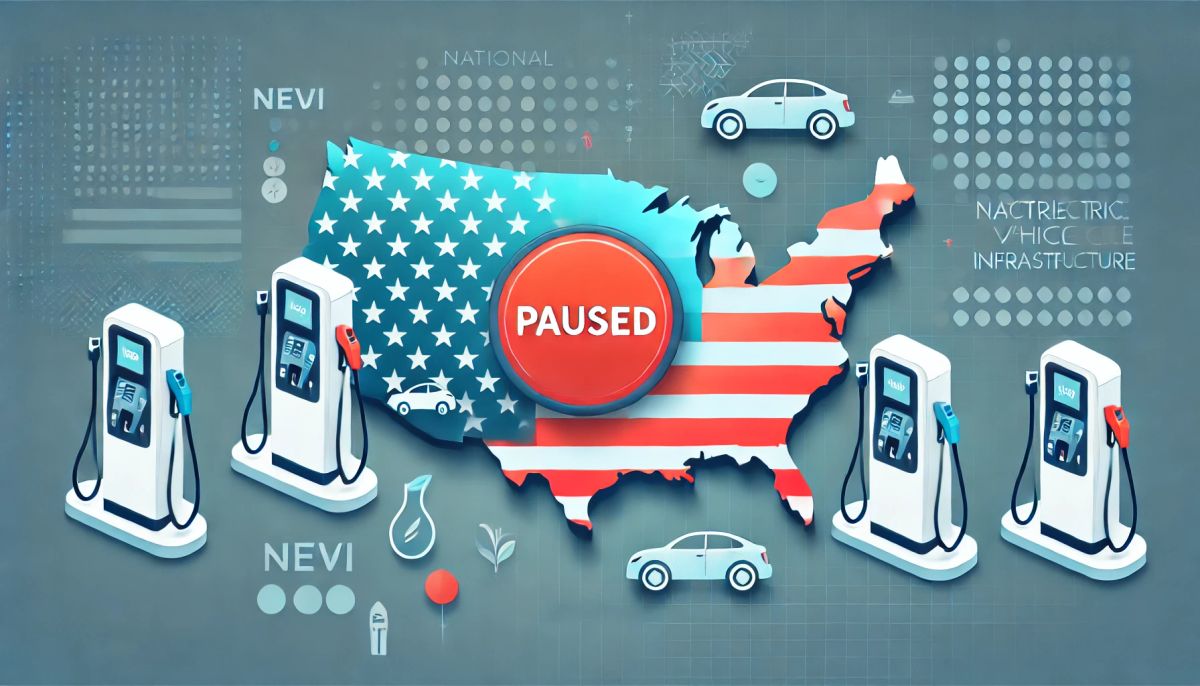The National Electric Vehicle Infrastructure (NEVI) program, a cornerstone of the U.S. government's efforts to expand EV charging infrastructure, has been abruptly suspended by the Trump administration. This decision has sent shockwaves through the EV industry, state governments, and environmental advocates. Below, we’ll explore what this suspension entails, its implications, and what lies ahead for stakeholders.
Table of Contents
- What is the NEVI Program?
- Key Achievements Before Suspension
- Details of the Suspension
- Reasons Behind the Suspension
- Impact on States and Projects
- Industry Reactions
- Next Steps from the Department of Transportation
- Legal and Political Implications
- Future of EV Infrastructure in the U.S.
- Key Takeaways
What is the NEVI Program?
The NEVI program was launched under the Bipartisan Infrastructure Law in 2021 with a $5 billion budget over five years to create a nationwide network of EV charging stations. Its goals included:
- Reducing "range anxiety" by ensuring chargers are accessible along major highways.
- Supporting underserved areas with limited charging infrastructure.
- Accelerating EV adoption by making charging as convenient as refueling gas vehicles.
- Requiring states to submit detailed plans for funding approval.
By 2025, NEVI aimed to install 500,000 high-speed chargers across the country, addressing one of the largest barriers to EV adoption.
Key Achievements Before Suspension
Before its suspension, NEVI had made significant progress:
- Approval of EV Infrastructure Deployment Plans for all 50 states, D.C., and Puerto Rico.
- Allocation of nearly $2.4 billion in funding for fiscal years 2022-2024.
- Installation of over 5,000 fast-charging ports along Alternative Fuel Corridors.
- Creation of approximately 15,000 jobs in EV-related industries.
- Partnerships with automakers and private companies to ensure interoperability and accessibility.
These achievements positioned NEVI as a transformative initiative for sustainable transportation.
Details of the Suspension
On February 7, 2025, the Federal Highway Administration (FHWA) announced an immediate halt to new funding obligations under NEVI. Key points include:
- States were ordered to stop approving new projects but could continue existing commitments.
- Previously approved state plans for fiscal years 2022-2025 were suspended.
- The Department of Transportation (DOT) will review and update NEVI policies to align with current administration priorities.
- New guidance is expected for public comment in spring 2025.
This decision has disrupted ongoing projects and created uncertainty about future investments.
Reasons Behind the Suspension
The Trump administration cited several reasons for suspending NEVI:
- Cost Concerns: Questions about cost-effectiveness and federal spending priorities.
- Policy Shift: A focus on fossil fuel production over renewable energy subsidies.
- Regulatory Review: Ensuring compliance with updated DOT policies.
Critics argue that these reasons may be politically motivated, given the administration's broader stance on energy policy.
Impact on States and Projects
The suspension has left states scrambling to reassess their EV infrastructure plans:
- At least six states (e.g., Alabama, Oklahoma) have paused their NEVI programs entirely.
- Ongoing projects face delays as states await clarity on reimbursements and future funding.
- Private companies that partnered with states are now uncertain about contract fulfillment.
This disruption risks delaying the broader adoption of EVs in underserved regions.
Industry Reactions
The suspension has drawn mixed reactions from stakeholders:
- EV Charging Companies: Expressed concerns over market uncertainty and potential investment slowdowns.
- Automakers: Worried about infrastructure gaps affecting EV sales strategies.
- Environmental Advocates: Criticized the move as a setback for climate goals.
- Energy Companies: Exploring private investment opportunities to fill gaps left by federal funding.
Genevieve Cullen, President of EDTA, urged swift action to minimize uncertainty for businesses and states already investing in advanced transportation infrastructure.
Next Steps from the Department of Transportation
The DOT has outlined its plan following the suspension:
- Conducting a comprehensive review of NEVI policies.
- Developing updated draft guidance for public comment by spring 2025.
- Continuing reimbursements for existing projects to avoid financial disruptions.
- Collaborating with states to manage transitions during this pause.
These steps aim to align NEVI with evolving federal priorities while maintaining some level of stability.
Legal and Political Implications
The suspension may face legal challenges due to its potential violation of federal procedures:
- Critics argue that halting previously approved state plans could breach the Administrative Procedures Act (APA).
- Federal courts have previously overturned similar funding freezes by requiring agencies to follow proper legal protocols.
This legal uncertainty adds another layer of complexity to an already contentious issue.
Future of EV Infrastructure in the U.S.
Despite this setback, there are several potential paths forward:
- Increased reliance on state-led initiatives and private investments.
- Greater emphasis on public-private partnerships to expand charging networks independently of federal funding.
- Advocacy from environmental groups and industry associations to restore or replace NEVI funding mechanisms.
The long-term vision for a robust national EV charging network remains intact but faces significant delays.
Key Takeaways
- The suspension halts all new funding obligations under NEVI pending a policy review by DOT.
- States must pause new projects but can continue existing commitments with reimbursement assurances.
- The move disrupts progress toward building a nationwide EV charging network, delaying climate goals and market growth.
- Industry stakeholders are calling for swift resolution to minimize uncertainty and maintain momentum in EV adoption.
- Legal challenges may arise due to procedural concerns surrounding the suspension.
As we await further guidance from DOT, it’s clear that collaboration between federal agencies, states, and private entities will be crucial in navigating this uncertain period for EV infrastructure development. This blog post provides an in-depth look at the current state of the NEVI program while optimizing SEO through structured subheadings, detailed content, and actionable insights for readers interested in sustainable transportation trends or policy updates.
